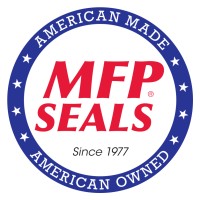
Martin Fluid Power (MFP Seals)
Founded in 1977, Martin Fluid Power includes five distribution locations in the US, plus locations in England and Taiwan. MFP Seals represents a culmination of bringing together our Design, Engineering, Machining, Molding, Kitting, and Die Cutting departments. Today we are focused on designing, engineering and manufacturing, the highest quality seals, made in the USA. MFP Seals, a division of Martin Fluid Power, is focused on providing you superior service, an effortless experience and access to our sealing devices worldwide. Through our website, stocking locations and authorized distributors, our products are available wherever you are. The MFP Seals Manufacturing division encompasses our research, development, design, engineering, CNC machining, injection molding and die cutting departments. The focus of this division is to provide our customers with the highest level of engineered success, from initial plan to final production, throughout our product line. Whether we are working for a customer, enhancing the capability of an existing design, or engineering an entirely new seal, our team utilizes the latest technology to achieve the best results. Finite Element Analysis and state-of-the-art measuring systems are among the tools used to achieve the capabilities, tolerances and engineering accuracy our customers have come to expect from us.. The capability of a seal’s design is not only based on precision engineering, but also in the materials and machinery used to manufacture it. MFP Seals not only tests the compounds we use in the production of our seals, we also specially blend compounds to enhance specific properties based on the intended use of the product. From there we determine what type of manufacturing is necessary to achieve the optimal product. From start to finish, our goal is Sealing in Success™, the successful performance of our products, and the success of the businesses worldwide that depend on our products every day.






